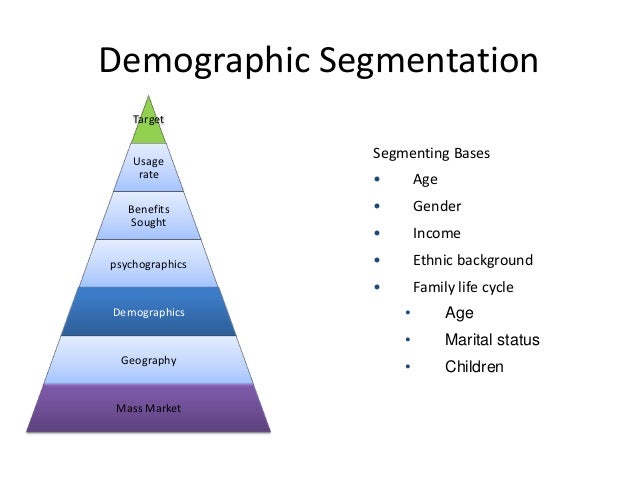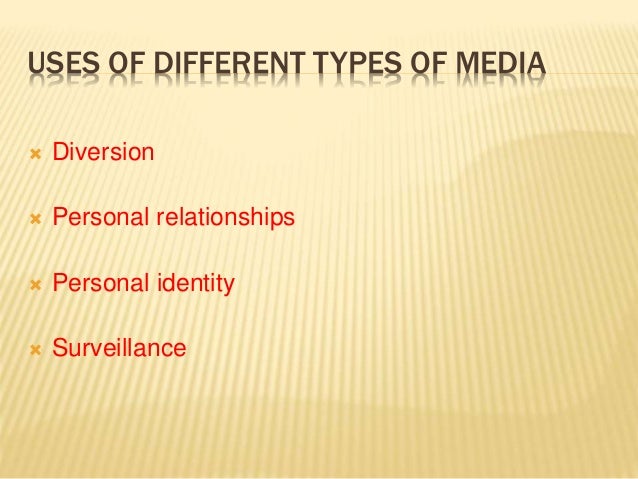Our Music Video:
The Kooks - Always Where I Need To Be
By including these conventions, technical and symbolic, of Indie Rock genres, then my music video is specific to a target audience and therefore would be more successful as it adheres to the conventions.
How all three Products Work Together:
The Music Video has earthy aspects and is set in the woods, this is similar to the Digipack, as it has aspects of the band and trees. The Digipack also has a still from the video which makes a direct relation and link to the Music Video. The Digipack relates to the Website as they both have blank space which is a technical convention of the Indie Rock Genre. All products are linked and are simple yet intriguing.
- Over the years, a large number of academics have attempted to understand the ways in which audiences interact with the media they consume
- Three general models have dominated this research
How did you gather your audience feedback? What methods did you use? Present you stats, feedback from questionnaire and focus groups
We used several different forms of gathering audience feedback such as YouTube, Freeonlinesurvey.com and Focus Groups. This allowed us to use the internet, to access a larger target audience
- YouTube
- Freeonlinesurveys.com (closed questions)
- Focus Groups (open questions)
Defining
the Audience
- It is useful for institutions and academics to be able to build up detailed accounts of how audiences are constructed
- Rather than seeing audience as masses or in simple numerical terms, it is common practice to find ways of segmenting the audience
- This segmentation can be achieved both demographically and psychographically
Applying
Audience Theory
- Look at who your target audience was
- How did you profile your audience?
- Which VALS did specify for your audience
- Did you have a primary and secondary market – how did your production target consumers/ youth culture? (cartoons or animated children films – primary audience kids – secondary audience parents who take kids to cinema)
- This is where an audience is segmented according to various significant social criteria eg gender, class, race, sexuality
- One of the most common demographic approachers to audience involves the JICNARS scale
- JICNARS – scale based on employment
We used demographic segmentation, as we found our target audience through age and gender. Our target audience was Girls of 15 years + and our secondary target audience was Boys of 17 year +. Therefore our audience feedback, using the focus group, was Demographic as we had a specific group of people. This was effective as we approached our target audience and asked them specific open questions which allowed us to make specific changes.
Psychographic
Segmentation
We used Psychographic Segmentation when taking audience feedback as we created a closed questioned online survey that was open to anyone who wants to take the survey. This means our audience will be a range of people who have various attitudes, beliefs, values etc.
We used Psychographic Segmentation when taking audience feedback as we created a closed questioned online survey that was open to anyone who wants to take the survey. This means our audience will be a range of people who have various attitudes, beliefs, values etc.
- Also known as lifestyle profiling
- The various attitudes, values, beliefs, and 'lifestyle' choices are sorted into a number of distinctive categories which are sorted into a number of distinctive categories which are used to predict consumption. VALS, the Values Attitudes and Lifestyles classification system is best known of the psychographic profiling systems
- 2 kinds of VALS – VALS and Teen VALSYounger audiences would be more attracted to our band as they are a similar age to the band. They feel as though they can relate to the band as they are going through the same things as each other. The stages of rebellion.
Some advantages to using these specific sources was that when we used the online survey using freeonlinesurveys.com, the feedback was anonymous which made the information less personal, and always encouraged a range of feedback in the sense of target audience. The online survey also puts all the information together which allowed us to put the information together quickly and correctly. The information is reliable in the sense that the information corrected is accurate.
The disadvantage of using the online survey is that it is not person specific, which means we are not able to tell who was giving us the information therefore we could not use our demographic audience feedback. However, this is why we used a focus group, which allowed us to have specific examples.
What strengths and weaknesses did the feedback indicate in your music video? Refer to specific examples and illustrate these.
There were mainly strengths when receiving feedback for our music video as our target audience really enjoyed all aspects of the music video. Specifically they liked how the woods sequences were different and engaging. As well as portraying the boys as down to earth fun guys, which is why the target audience felt compelled and interested. Another aspect that the target audience liked was the projections. They said this was mainly because it was interesting to watch ad kept them interested. This shows that our audience rejects the effects model and adheres to the uses and gratifications theory. Some weaknesses of the feedback is that they had comments about the filming for the music video. Such as the unsteady camera at the start etc. We tried to fix these things however, we were unable to go back and film more of the video as we were already in the stages of post-production.
The
Effects Model
- Derives from an early piece of audience research – the Payne Fun Studies
- Implies that audiences are passive recipient of the meanings and values of a text
- Meanings swallowed whole by innocent 'victims' that may become corrupted or depraved
- Also known as the 'hypodermic needle effect'
- Also implied:
- Media effects are cumulative
- Media effects are long term
- Media effects are revealed through both attitudes and behaviour
Explain the encoding/ decoding model in relation to your audience feedback, Provide examples
Encoding-Decoding Model
Encoding-Decoding Model
- Derives from the wok of Stuart Hall at the BCCCS
- A theoretical model, which is based upon the notion that the audience do not act as a 'mass', but rather as a collection of smaller groups defined by social and ideological elements
- Every media text is encoded with a message
- The media industries encode their texts and we decode that text
- Gathered together based on our values, upbringing etc.
- Media texts are 'encoded' (both consciously and unconsciously) with the values of their producers – generally white, middle-class, men
- However, the audience is not made up exclusively of these groups and different groups are likely to 'read' the text in different ways
- This 'decoding' process has 3 possible outcomes:
- A preferred reading
- audience accepts all of the intended meanings
- A negotiated reading
- accepts some of the meaning but not all, may involve contradictions
- An oppositional reading
- understand what text's intended meaning is but rejects this meaning
 Our target audience would understand the media texts as they are made to appeal to them and what they like, what colours they are most attracted to and what keeps them interested. However, if a person from outside of the target audience were to look at our media texts they would decode the texts negatively as they were not encoded for them specifically.
Our target audience would understand the media texts as they are made to appeal to them and what they like, what colours they are most attracted to and what keeps them interested. However, if a person from outside of the target audience were to look at our media texts they would decode the texts negatively as they were not encoded for them specifically.Reception Theory (exact opposite of the effects model)
- Stuart Hall argues that audiences can:
- Decode the media message in intelligent and engaging ways
- Decoding the message relies upon
- Oppositional negotiated and preferred readings
- Audiences are therefore acting in reading texts
Apply the uses and gratification theory to your responses – which are the most applicable points?
The
Uses and Gratifications Model
- Derives from research carried out in the 1950's – the Personal Influence study by Lazarfeld, Blumler and Katz
- Audiences are far from passive in their approach to the media; rather they actively choose and consume the media to satisfy particular needs and gratifications which they exhibit
- developing due to the proliferation of technology
Uses
and Gratifications
- Diversion – a form of escape or emotional release from everyday pressure
- Personal Relationships – companionship via media personalities and characters, and sociability through discussion about the media artefact with other people
- Personal identity – the ability to compare one's life with the characters and situations within the media, and so explore personal problems and perspectives
- Surveillance – a supply of information about what is going on in the world
Maslow's
Hierarchy of Needs
- Self- Actualisation
- Esteem
- Social
- Safety
- Physiological
Examples
of the Uses and Gratifications
Diversion:
Escapism from
mundane existence, purely for entertainment
-
Action films
- music
- tv
- personalities
Personal
Relationships:
To experience
companionship with characters or with other members of audience
through shared interest in media texts
- news
- Romance films
- social media
Personal identity:
To identify with
characters and situations and thereby make sense of one's own life
and views
- Music
- Romance films
Surveillance:
A supply of
information about what is going on in the world.
- News
- Drama films
For our media texts, specifically the music video our audience would be through personal identity and personal relationships. We created a fun indie music video for our band so that they would be able to feel close to the band and relate to them in different ways.
In what ways did your audience feedback on your video illustrate this model in action?
Through using focus groups we were able to use the uses and gratifications model to get more accurate and specific information. We used different theories, such as the star image theory to construct our band and then showed to the audiences.
Star
Theory
- Richard Dyer's Star Image
Star images are constructed, artificial images, created through a range of products. Stars are produced and consumed on the strengths of their 'meanings'. Very often a star's meaning is very clear and obvious so that it is easy for an audience to quickly understand and make a decision whether to consume. The industry creates a range off stars with different meanings to meet the needs of different audience segments
- Lady Gaga=? Adele=?
- “Stars are commodities produced and consumed on the strength of their meanings”
- Focuses under Richard Negus – synthetic and organic
Spreadability
- Henry Jenkins theory from his book Spreadable Media: Creating Value in a Network Culture published in 2013
- Rejects the notion of 'viral', self-replicating media
- Sees the act of spreading content as the active not passive
- Believes that audience play crucial role in the dissemination of media products in the online age - “if it doest spread, its dead”
- Circulation in contrast to (top down) distribution
- Believes that sharing is an act of participation
- That this act leads on to deeper levels of participation, the initial sharing can also be described as 'preparing to participate' [more fully]
- Jason Mittell developed the complementary notion of 'drillability'
This is my Evaluation Task 3, where I talk about the audience feedback and how it has helped my music campaign improve and make them better. I used emaze, to present my feedback and response to the feedback. Please click on the link to see the presentation in full screen.
Link to Presentation:
https://www.emaze.com/@AFZTOWTT/evaluation-question3
Link to Presentation:
https://www.emaze.com/@AFZTOWTT/evaluation-question3

We created a survey, where we put attached close, yes or no question and sent it to our target audience. We also recorded ourselves making the video and writing in the questions



















